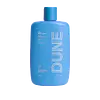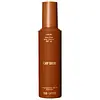What's inside
What's inside
 Key Ingredients
Key Ingredients

 Benefits
Benefits

 Concerns
Concerns

 Ingredients Side-by-side
Ingredients Side-by-side

Butyl Methoxydibenzoylmethane
UV AbsorberHomosalate
Skin ConditioningEthylhexyl Salicylate
UV AbsorberOctocrylene
UV AbsorberWater
Skin ConditioningDimethicone
EmollientPropanediol
SolventAlcohol Denat.
AntimicrobialCapryloyl Glycerin/Sebacic Acid Copolymer
Skin Conditioning1,2-Hexanediol
Skin ConditioningGlycerin
HumectantSodium Polyacryloyldimethyl Taurate
Emulsion StabilisingBrassica Glycerides
EmollientAcrylates/C10-30 Alkyl Acrylate Crosspolymer
Emulsion StabilisingAminomethyl Propanol
BufferingCaprylhydroxamic Acid
Polysilicone-11
Disodium EDTA
Erythritol
HumectantParfum
MaskingTocopheryl Acetate
AntioxidantButylene Glycol
HumectantMelia Azadirachta Leaf Extract
Skin ConditioningMelia Azadirachta Flower Extract
Skin ConditioningHibiscus Esculentus Fruit Extract
Skin ConditioningDecyl Glucoside
CleansingButyl Methoxydibenzoylmethane, Homosalate, Ethylhexyl Salicylate, Octocrylene, Water, Dimethicone, Propanediol, Alcohol Denat., Capryloyl Glycerin/Sebacic Acid Copolymer, 1,2-Hexanediol, Glycerin, Sodium Polyacryloyldimethyl Taurate, Brassica Glycerides, Acrylates/C10-30 Alkyl Acrylate Crosspolymer, Aminomethyl Propanol, Caprylhydroxamic Acid, Polysilicone-11, Disodium EDTA, Erythritol, Parfum, Tocopheryl Acetate, Butylene Glycol, Melia Azadirachta Leaf Extract, Melia Azadirachta Flower Extract, Hibiscus Esculentus Fruit Extract, Decyl Glucoside
Butyl Methoxydibenzoylmethane 3%
UV AbsorberEthylhexyl Salicylate 5%
UV AbsorberOctocrylene 10%
UV AbsorberWater
Skin ConditioningC12-15 Alkyl Benzoate
AntimicrobialButyloctyl Salicylate
Skin ConditioningSodium Potassium Aluminum Silicate
Diisopropyl Sebacate
EmollientDiisopropyl Adipate
EmollientLauryl Lactate
EmollientMica
Cosmetic ColorantPropanediol
SolventGlyceryl Stearate
EmollientVp/Eicosene Copolymer
Chondrus Crispus Extract
Skin ConditioningLimonium Gerberi Extract
Skin ProtectingFerulic Acid
AntimicrobialCitrullus Lanatus Fruit Extract
Skin ConditioningPyrus Malus Fruit Extract
Skin ConditioningLens Esculenta Fruit Extract
Skin ConditioningHelianthus Annuus Seed Oil
EmollientTheobroma Cacao Seed Butter
EmollientGlycerin
HumectantCaprylic/Capric Triglyceride
MaskingCetyl Phosphate
EmulsifyingGlyceryl Stearate Citrate
EmollientSilica
AbrasiveEthylene Brassylate
MaskingCaprylyl Glycol
Emollient1,2-Hexanediol
Skin ConditioningAcrylates/C10-30 Alkyl Acrylate Crosspolymer
Emulsion StabilisingAminomethyl Propanol
BufferingSodium Lactate
BufferingSodium PCA
HumectantSodium Benzoate
MaskingPotassium Sorbate
PreservativeDisodium EDTA
Chlorphenesin
AntimicrobialSynthetic Fluorphlogopite
Tin Oxide
AbrasiveCI 77891
Cosmetic ColorantCI 77491
Cosmetic ColorantButyl Methoxydibenzoylmethane 3%, Ethylhexyl Salicylate 5%, Octocrylene 10%, Water, C12-15 Alkyl Benzoate, Butyloctyl Salicylate, Sodium Potassium Aluminum Silicate, Diisopropyl Sebacate, Diisopropyl Adipate, Lauryl Lactate, Mica, Propanediol, Glyceryl Stearate, Vp/Eicosene Copolymer, Chondrus Crispus Extract, Limonium Gerberi Extract, Ferulic Acid, Citrullus Lanatus Fruit Extract, Pyrus Malus Fruit Extract, Lens Esculenta Fruit Extract, Helianthus Annuus Seed Oil, Theobroma Cacao Seed Butter, Glycerin, Caprylic/Capric Triglyceride, Cetyl Phosphate, Glyceryl Stearate Citrate, Silica, Ethylene Brassylate, Caprylyl Glycol, 1,2-Hexanediol, Acrylates/C10-30 Alkyl Acrylate Crosspolymer, Aminomethyl Propanol, Sodium Lactate, Sodium PCA, Sodium Benzoate, Potassium Sorbate, Disodium EDTA, Chlorphenesin, Synthetic Fluorphlogopite, Tin Oxide, CI 77891, CI 77491
Ingredients Explained
These ingredients are found in both products.
Ingredients higher up in an ingredient list are typically present in a larger amount.
1,2-Hexanediol is a synthetic liquid and another multi-functional powerhouse.
It is a:
- Humectant, drawing moisture into the skin
- Emollient, helping to soften skin
- Solvent, dispersing and stabilizing formulas
- Preservative booster, enhancing the antimicrobial activity of other preservatives
Acrylates/C10-30 Alkyl Acrylate Crosspolymer is a synthetic polymer. It is used to thicken and improve the texture of products. Due to its properties, it can prevent water and oil ingredients from separating.
Aminomethyl Propanol is used to adjust the pH of products. It is also used as a base to create other organic compounds. Having a balanced pH is important for protecting your skin.
Aminomethyl propanol is safe to use in cosmetics up to 1%. It is soluble in water.
Also known as Avobenzone, this ingredient is a chemical sunscreen filter that provides protection in the UV-A range.
Avobenzone is globally approved and is the most commonly used UV-A filter in the world.
Studies have found that avobenzone becomes ineffective when exposed to UV light (it is not photostable; meaning that it breaks down in sunlight). Because of this, formulations that include avobenzone will usually contain stabilizers such as octocrylene.
However, some modern formulations (looking at you, EU!) are able to stabilize avobenzone by coating the molecules.
Avobenzone does not protect against the UV-B range, so it's important to check that the sunscreen you're using contains other UV filters that do!
The highest concentration of avobenzone permitted is 3% in the US, and 5% in the EU.
Learn more about Butyl MethoxydibenzoylmethaneDisodium EDTA plays a role in making products more stable by aiding other preservatives.
It is a chelating agent, meaning it neutralizes metal ions that may be found in a product.
Disodium EDTA is a salt of edetic acid and is found to be safe in cosmetic ingredients.
Learn more about Disodium EDTAEthylhexyl Salicylate is an organic compound used to block UV rays. It primarily absorbs UVB rays but offers a small amount of UVA protection as well.
Commonly found in sunscreens, Ethylhexyl Salicylate is created from salicylic acid and 2-ethylhexanol. You might know salicylic acid as the effective acne fighter ingredient and BHA.
The ethylhexanol in this ingredient is a fatty alcohol and helps hydrate your skin, similar to oils. It is an emollient, which means it traps moisture into the skin.
According to manufacturers, Ethylhexyl Salicylate absorbs UV wavelength of 295-315 nm, with a peak absorption at 307-310 nm. UVA rays are linked to long term skin damage, such as hyperpigmentation. UVB rays emit more energy and are capable of damaging our DNA. UVB rays cause sunburn.
Learn more about Ethylhexyl SalicylateGlycerin is already naturally found in your skin. It helps moisturize and protect your skin.
A study from 2016 found glycerin to be more effective as a humectant than AHAs and hyaluronic acid.
As a humectant, it helps the skin stay hydrated by pulling moisture to your skin. The low molecular weight of glycerin allows it to pull moisture into the deeper layers of your skin.
Hydrated skin improves your skin barrier; Your skin barrier helps protect against irritants and bacteria.
Glycerin has also been found to have antimicrobial and antiviral properties. Due to these properties, glycerin is often used in wound and burn treatments.
In cosmetics, glycerin is usually derived from plants such as soybean or palm. However, it can also be sourced from animals, such as tallow or animal fat.
This ingredient is organic, colorless, odorless, and non-toxic.
Glycerin is the name for this ingredient in American English. British English uses Glycerol/Glycerine.
Learn more about GlycerinOctocrylene protects skin from sun damage. It absorbs UV-B with peak absorption of 304 nm. It is a common sunscreen ingredient and often paired with avobenzone, a UVA filter. This is because octocrylene stabilizes other sunscreen ingredients by protecting them from degradation when exposed to sunlight. Octocrylene is a photostable ingredient and loses about 10% of SPF in 95 minutes.
Octocrylene also acts as an emollient, meaning it helps skin retain moisture and softens skin. It is oil-soluble and hydrophobic, enhancing water-resistant properties in a product.
Those who are using ketoprofen, a topical anti-inflammatory drug, may experience an allergic reaction when using octocrylene. It is best to speak with a healthcare professional about using sunscreens with octocrylene.
The EU allows a maximum of these concentrations:
Learn more about OctocrylenePropanediol is an all-star ingredient. It softens, hydrates, and smooths the skin.
It’s often used to:
Propanediol is not likely to cause sensitivity and considered safe to use. It is derived from corn or petroleum with a clear color and no scent.
Learn more about PropanediolWater. It's the most common cosmetic ingredient of all. You'll usually see it at the top of ingredient lists, meaning that it makes up the largest part of the product.
So why is it so popular? Water most often acts as a solvent - this means that it helps dissolve other ingredients into the formulation.
You'll also recognize water as that liquid we all need to stay alive. If you see this, drink a glass of water. Stay hydrated!
Learn more about Water